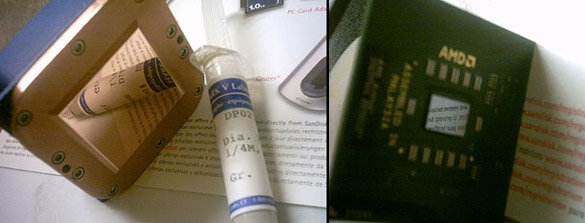I was talking to my dad who about 3 years ago worked for a company who made diamond blades, and produced synthetic diamonds.
so I got to thinking; diamonds have the highest thermal conductivity known to man right?
so why not make a paste similair to artic silver which contains bits of solid silver. but use bits of diamond?
he said they have a cutting grease thats like a polishing compound type thing.
just got me curious if anyone has ever tried something like this as a thermal paste.
so I got to thinking; diamonds have the highest thermal conductivity known to man right?
so why not make a paste similair to artic silver which contains bits of solid silver. but use bits of diamond?
he said they have a cutting grease thats like a polishing compound type thing.
just got me curious if anyone has ever tried something like this as a thermal paste.
